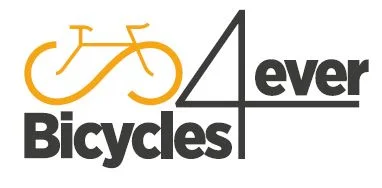Tadej Pogačar’s Bike Fit with Road Cycling Academy
Source: Road Cycling Academy Youtube Channel: Tadej Pogačar’s Bike Fit
Video Tadej Pogačar’s Bike Fit with Road Cycling Academy
Video Tadej Pogačar’s Bike Fit with Road Cycling Academy YouTube Channel.
Tadej Pogačar’s Bike Fit
Discover the Benefits of Adjusting Your Saddle Angle for Road Cycling
When it comes to road cycling, the small details can make a big difference. One topic that has been getting more attention lately is the idea of adjusting your saddle angle based on the type of race or terrain you’ll be riding on. This concept was recently discussed by Peak Talk on YouTube, sparking a conversation about whether recreational amateur road cyclists should consider implementing this practice into their own training and racing. In this article, we’ll dive into the benefits, considerations, and potential drawbacks of adjusting your saddle angle, as well as the implications for different types of riders.
The Theory Behind Adjusting the Saddle Angle
One of the key ideas behind adjusting the saddle angle is to optimize the rider’s position for different types of races and terrains. The theory is that by tilting the saddle forward for certain races, the rider can maintain a more optimal position on the bike during short, punchy climbs with gradients over six percent. As the bike rotates up the ascent, the saddle becomes more level, allowing the rider’s pelvis to rotate back and stay over the top of the stroke on steeper gradients. This positioning can help the rider produce more power and reduce the likelihood of fatigue or discomfort when tackling challenging terrain.
The Neuromuscular Advantage
While the physiological benefits of adjusting the saddle angle for road cycling are still being debated, there is evidence to suggest at least a neuromuscular advantage. Riders who engage in short burst efforts, such as those found in XC mountain bike races, often use a similar strategy of setting the seat forward to maintain an optimal position on steep, technical terrain. By keeping the seat forward, riders can ensure their pelvis doesn’t rotate too far behind the bottom bracket, allowing them to stay balanced over the stroke and maintain peak performance during these demanding efforts.
The Psychological Impact
Beyond the potential physiological and neuromuscular advantages, there is also a psychological aspect to consider. Many riders report feeling a greater sense of balance and control when their seat is set forward, especially on steep gradients. This psychological benefit can contribute to a rider’s overall confidence and performance, highlighting the importance of mental fortitude in the sport of cycling.
Considerations for Amateur and Recreational Riders
While adjusting the saddle angle may offer significant benefits for professional riders like Pogačar, recreational and amateur riders should approach this practice with caution. Without proper training and testing, riders risk injury or discomfort by suddenly changing their position on the bike. Additionally, riders who are not as powerful or who have a larger upper body may experience negative effects, such as hand numbness or neck pain, from the additional weight placed on the front of the bike. It’s essential to assess the potential benefits against the individual’s physical condition and training regimen before making any significant changes to the saddle angle.
The Case of Tadej Pogačar
At the professional level, Tadej Pogačar’s ability to switch between saddle positions serves as a testament to his exceptional physical conditioning and functionality. His capacity to ride with the seat far forward and tilt it down is a product of his extensive training and conditioning, ensuring that he can handle the additional demands placed on his body. For the average weekend rider, attempting to emulate this without the same training and preparation could lead to adverse effects. Pogačar’s case underscores the importance of optimizing the body for specific cycling demands and highlights the potential drawbacks for riders who are not as finely tuned for the sport.
Potential Solutions and Innovations
As the discussion around adjusting the saddle angle continues, there is room for innovation in the development of adjustable seat setback clamps. These devices would allow riders to easily modify their saddle position based on the terrain they are facing, providing a potential solution for amateur and recreational riders to explore without risking injury or discomfort. Such innovations could open the door to greater flexibility in optimizing a rider’s position while maintaining safety and comfort on the bike.
In Conclusion
The concept of adjusting the saddle angle for road cycling presents a range of potential benefits, challenges, and considerations for riders at all levels. While professional riders like Pogačar can leverage this practice to their advantage, recreational and amateur riders should approach it with caution and ensure proper training and testing before making significant changes to their saddle position. Through ongoing discussion, innovation, and consideration of individual needs and capabilities, the cycling community can continue to explore ways to optimize performance while maintaining rider safety and comfort.
The opinions expressed in this space are the sole responsibility of the YouTube Channel Road Cycling Academy and do not necessarily represent the views of CicloNews.

